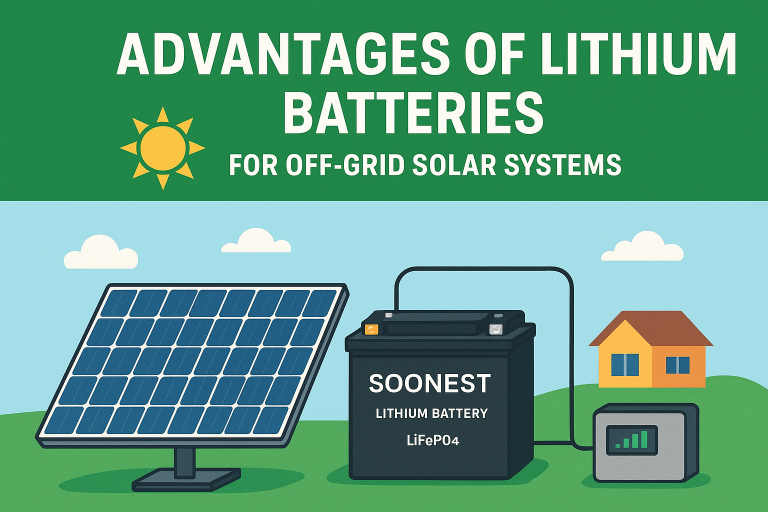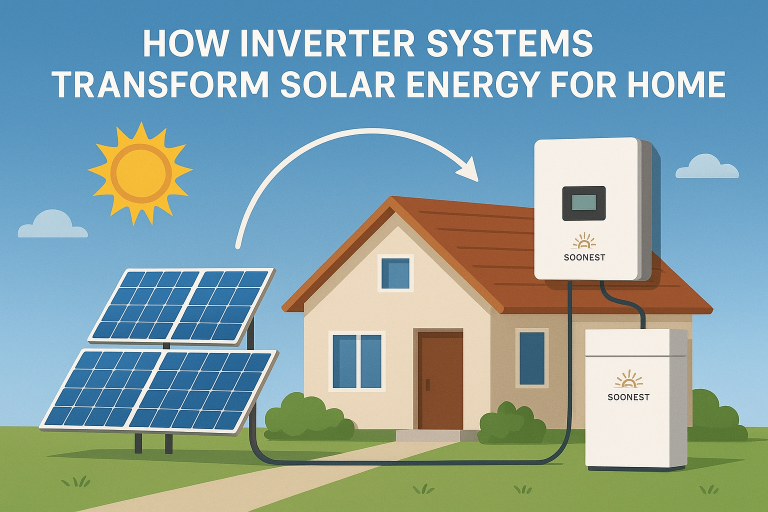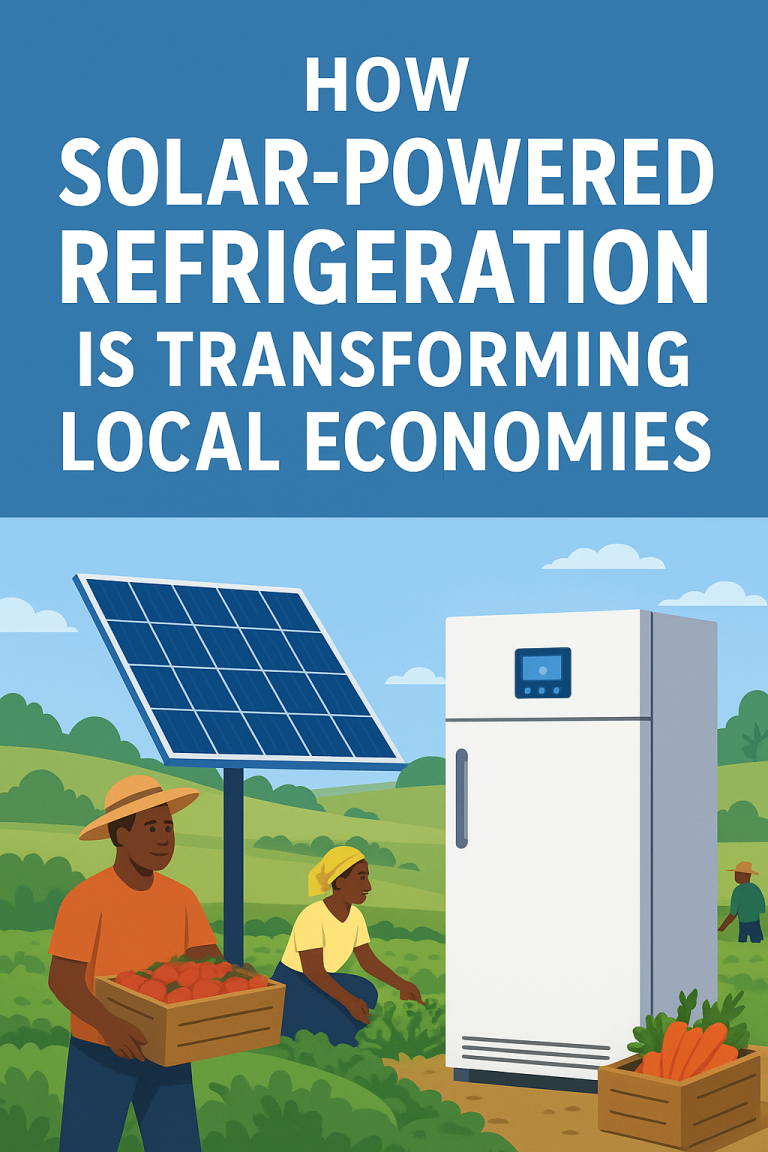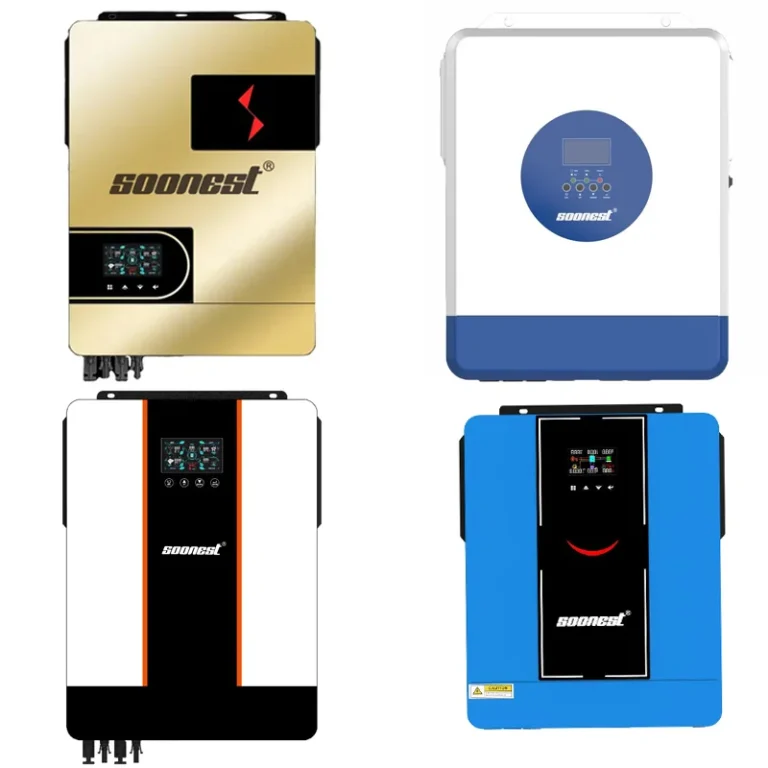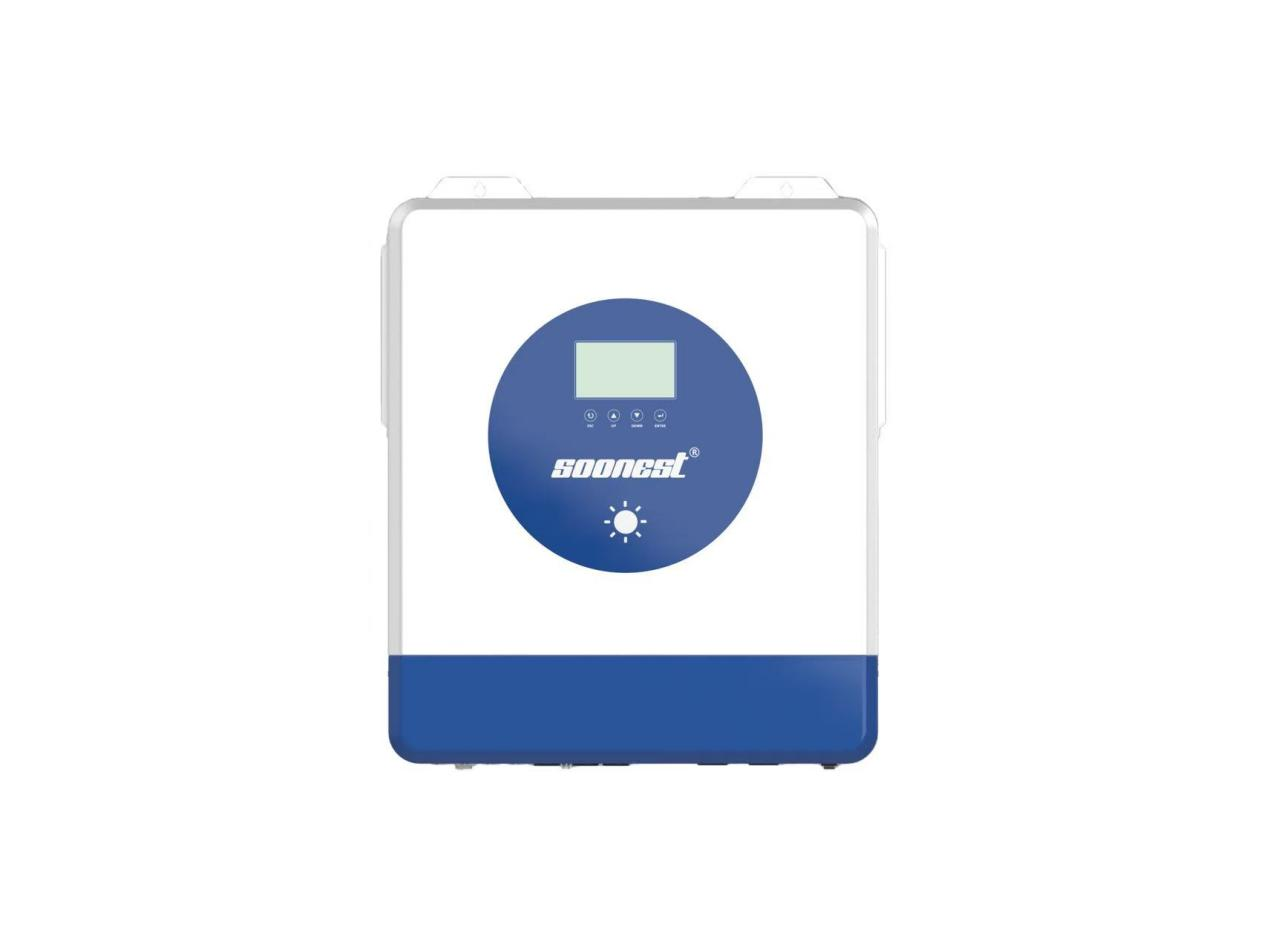
Os sistemas de refrigeração são super necessários para manter os inversores solares correndo suavemente e durando por anos. Muito calor estraga seu desempenho e pode quebrar partes dentro. A maioria do calor vem de coisas como transistores e transformadores. O resfriamento simples, como aquecedores de metal, funciona bem para pequenas instalações. Mas grandes sistemas precisam de refrigeração mais forte, como ventiladores ou instalações líquidas. Bom movimento aéreo, controladores de temperatura e coberturas resistentes à poeira mantêm o calor em controle. O cuidado regular -- como limpar aquecedores, testar ventiladores, e usar ferramentas como câmeras de calor ou aplicativos -- assegura que tudo fica em forma superior. Escolhar inversores solares com refrigeração inteligente, como fãs que se ajustam sozinhos, é uma grande ajuda em lugares quentes ou polvos. Ficar em cima de problemas de calor impede cair energia, ajuda inversores solares a durar mais tempo, e tira mais energia deles.
Qual é o papel que o refrigerante desempenha no desempenho do inversor solar?
Por que a gestão térmica é tão importante para a eficiência e estabilidade dos inversores?
O calor aparece naturalmente quando qualquer aparelho eletrônico troca energia, e inversores solares não são exceção. Quando um inversor solar muda energia DC de painéis para energia AC para sua casa, ele faz uma tonelada de calor. Se você não tem um plano s ólido para lidar com esse calor, o desempenho e a confiabilidade do sistema podem cair rápido.
O inversor solar é como o centro de controle da sua configuração solar, mantendo as coisas funcionando sem um ataque. Mas quando fica aquecido demais dentro, partes como semicondutores (IGBTs e capacitores) começam a lutar com mais resistência. Eles se desgastam mais rápido do que deveriam. Isto corta quanta energia o inverter pode produzir. Também pode danificar partes importantes muito cedo.
Tratando o calor adequadamente mantém seu inversor solar em sua zona de temperatura feliz. Isso permite que funcione maravilhosamente, mesmo nos dias mais quentes ou em pontos realmente quentes.
Quais são as fontes primárias de calor dentro de um inversor solar?
A maioria do calor vem de peças de energia, como trocar transistores, transformadores, indutores e rectificadores. Esses pedaços criam calor por causa de coisas chamadas trocar perdas e perdas de condução. Além disso, partes que cargam baterias, especialmente aquelas com controladores MPPT de alta corrente, acrescentam ainda mais calor.
Inverteres solares híbridos lidar com dois empregos: eles se conectam à rede e armazenam energia. Eles têm interiores mais complexos, então eles tendem a produzir calor extra.
Como o Superaquecimento afeta a duração de vida do sistema e a qualidade de saída?
Muito calor pode levar a grandes problemas, como fuga térmica ou desordem. Deração acontece quando o inversor solar baixa sua energia com propósito para ficar frio. Isso significa que você obtém menos energia do seu sistema. Com o tempo, muito calor também usa coisas como capacitores eletrolíticos e conexões de soldador mais rápido do que normal.
Os inversores solares atuais geralmente têm truques de segurança para sobrecarga, alto calor ou curtos circuitos. Mas é muito melhor evitar problemas de calor com design inteligente do que depender dessas características de segurança.
Quais sistemas de refrigeração são comumente usados em inversores solares?
Como os mecanismos passivos de refrigeração funcionam sem partes moventes?
O resfriamento passivo usa maneiras naturais de empurrar o calor para fora, como convecção e radiação, sem nenhum pedaço em movimento. É ótimo para sistemas menores ou menos poderosos onde o calor não é um problema enorme.
As instalações de convecção natural usam aquecedores finados feitos de coisas como alumínio ou cobre que manejam bem o calor. Esses aquecedores espalham calor usando sua grande superfície. Não são necessários ventiladores ou bombas.
Usar materiais de alta qualidade deixa de se arrefecer e mantém as peças de refrigeração trabalhando por um longo tempo. Os bons materiais são materiais em lugares brutos, como campos de pó ou áreas húmidas.
Quando é necessário refrigerar ativo para inversores de alta capacidade?
Para configurações maiores – especialmente mais de 5kW – o refrigeração passivo não o corta. O refrigeração ativa, como ventiladores ou ciclos líquidos, é necessário para manter as coisas estáveis e frias.
O refrigerante forçado utiliza ventiladores colocados em pontos inteligentes para puxar ar mais frio sobre partes quentes. Alguns sistemas têm controles de velocidade frios de ventiladores que mudam baseados no quão quentes as coisas são. Isso mantém o ruído baixo, economiza energia e faz o refrigerante funcionar melhor.
Modificações inteligentes de ventiladores deixam o sistema lidar com mudanças climáticas sem usar os ventiladores rápido demais.
Quais características de design asseguram uma dissipação de calor eficiente?
Como o fluxo aéreo deveria ser engenhecido dentro do anexo?
Bom fluxo de ar começa com como partes são montadas dentro. Partes quentes precisam sentar-se onde o ar pode fluir naturalmente, desde ventos de entrada até ventos de escape. Isto impede que os pontos quentes ou o ar voltem ao redor. Guidas dentro, como baffles, ajudam a mover o ar sobre aquecedores ou placas de circuitos mais suavemente.
Onde as ventilações vão para o caso é um grande problema. Os ventiladores de escape superiores deixam o ar quente flutuar para cima e para fora. A ingestão lateral entra no ar mais frio sem nada entrar no caminho.
Por que os sensores de temperatura são essenciais para o monitoramento inteligente?
Os sensores seguem o calor em pontos-chave, como aquecedores, rolas de transformador, ou dentro do caso. Eles enviam informações ao software do inversor solar. O software pode entrar -- como cortar energia ou apagar -- se as coisas ficarem muito torradas.
Alguns sistemas permitem verificar dados de calor de longe, usando WiFi ou GPRS. Isso ajuda você a pegar problemas de calor cedo, antes que eles se transformem em algo sério.
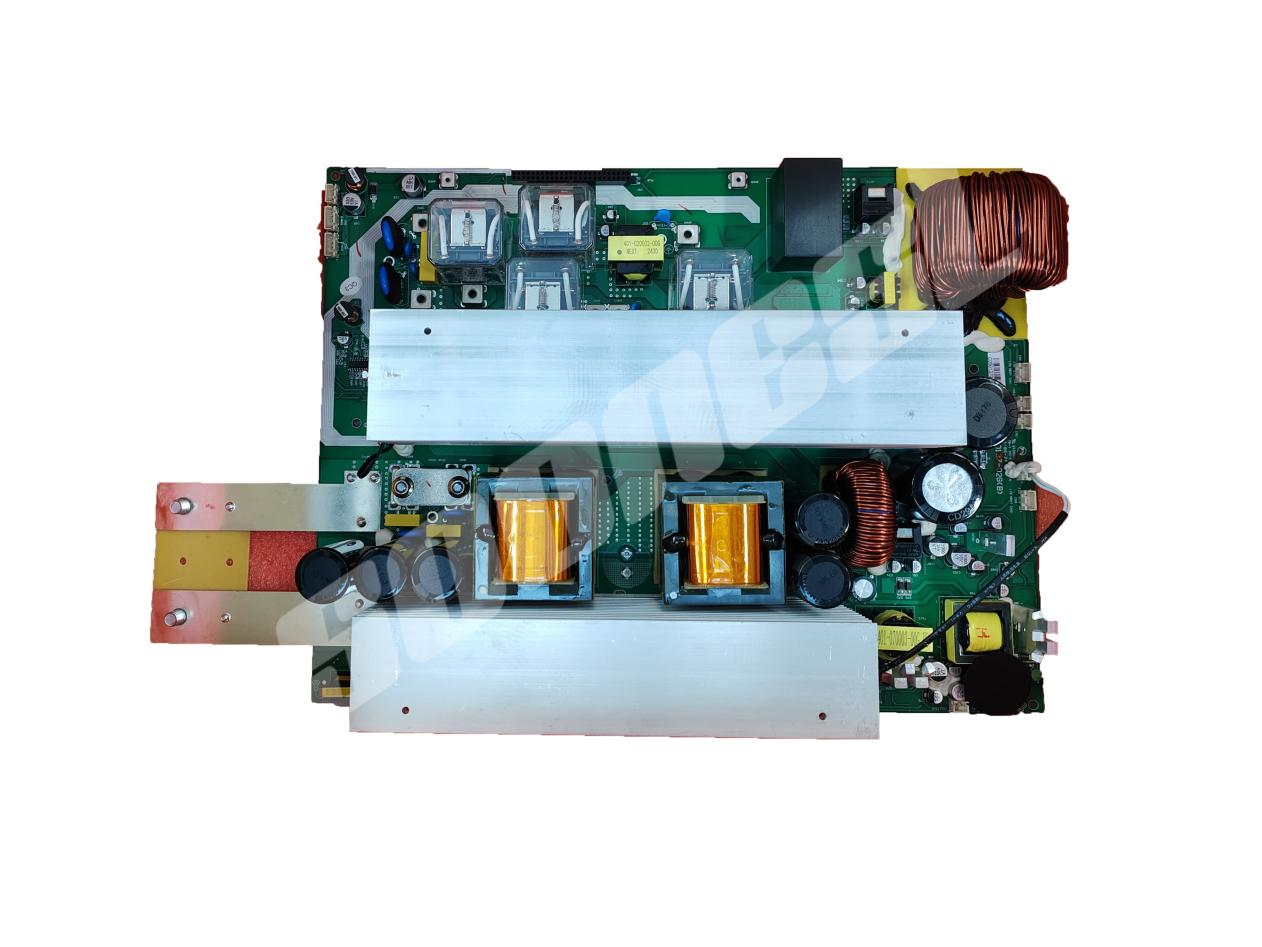
O monitoramento remoto WiFi/GPRS torna isso simples.
Como o Enclosure Design Influence Thermal Regulation?
Casos de inversores solares ao ar livre precisam bloquear poeira e água, mas ainda deixar o ar passar. Casos classificados por IP muitas vezes têm telas de malha ou projetos especiais de ventilação que permitem entrar ar enquanto mantêm a terra fora.
Um kit anti-poeira construído para ambientes duros ajuda as coisas a correr suavemente em pontos duros, como fazendas de poeira ou áreas de praia salgada.
Quais práticas de manutenção ajudam a manter a eficiência térmica ao longo do tempo?
Por que você deveria limpar calor e ventiladores aéreos?
A polvere nos aquecedores bloqueia o fluxo aéreo e armadilha o calor. Limpa as plumas semanalmente com ar comprimido ou uma escova suave. Isso é super importante se seu inversor solar está perto de estradas de terra ou fábricas ocupadas.
O Inverter híbrido de SF Series mais cedo tem um kit anti-poeira construído para ambientes duras. Mas mesmo esses precisam de uma limpeza rápida agora e depois para ficar em grande forma.
Quando você deveria inspeccionar unidades de ventiladores para usar ou fracassar?
Os ventiladores podem ficar cansados de carregar problemas ou de terra acumulando. Verifique-os todos os meses para ter certeza de que giram bem, não façam sons estranhos, e correm à velocidade certa (olhe para o software do inversor). - Troque rapidamente qualquer ventilador ruim para evitar o desligamento de calor quando o sistema está trabalhando duro.
Como o ambiente ambiente afeta o desempenho de refrigeração?
Se seu inversor solar está em um sótão quente, caixa de metal, ou ponto solar, o calor externo pode tornar o refrigerante mais difícil mesmo antes do inversor começar a aquecer. Verifique a temperatura da área com um termómetro todas a s estações. Se é muito quente, mover o inverter para um ponto com melhor movimento a éreo.
Quais ferramentas podem ajudá-lo a rastrear a saúde térmica de forma proativa?
Como é que a imagem térmica pode identificar pontos quentes escondidos?
Cámaras de calor detectam áreas quentes dentro do caso que talvez não explodem alarmes. Eles podem apontar para ruim fluxo aéreo ou partes começando a falhar. Usa-as a cada três meses durante os cheques para encontrar problemas cedo.
Quais benefícios vêm das plataformas de monitoramento de software em tempo real?
Sistemas de inversores solares próximos permitem olhar para os dados antigos de temperatura e estatísticas de energia em painéis de bordo online. Isso mostra se as quedas de desempenho vêm de mudanças climáticas. Você pode consertar coisas antes de quebrar.
O apoio ao monitoramento RS-485 facilita o manejo de grandes sistemas em muitos lugares.
Como esse fabricante melhora a eficiência térmica através de seus produtos?
Se você quer uma empresa com controle de calor de alto nível para casa, negócios, for a da rede, ou configurações industriais, vejam soluções Solar Hybrid Inverter. Eles têm modelos de todos os tamanhos (1 kW a mais de 10 kW). Seus sistemas vêm com controles inteligentes de ventiladores, aquecedores sólidos, casos de prova de poeira e monitoramento em tempo real. Estes são incríveis para lugares difíceis como fazendas rurais ou torres de telecomunicações onde o calor e poeira são grandes desafios.
Que lista de controle de manutenção deveria seguir ao longo do ano?
- Semanalmente: Olhem para ventiladores e aquecedores. Limpar qualquer terra ou lixo que você vê.
- Mesualmente: Verifique os registos dos ventiladores na tela digital. Ouve os ruídos estranhos dos fãs.
- Cada três meses, Vias de ar limpo com ferramentas que o fabricante diz usar.
- Duas vezes por ano: Anovar o software do inversor solar para manter as configurações de ventiladores e calor atualizadas.
- Ao ano: Fez um scan de calor completo com uma câmera de calor. substituir qualquer fã que pareça esgotado.
- Como necessário: Mover inversores se o sol ou o calor sazonais tornam o ponto muito quente.
Esses passos asseguram que seu inversor solar permanece em grande forma, independentemente do tempo ou quanto energia ele está manipulando.
Qual modelo você deve escolher baseado em seu ambiente de instalação?
E se você estiver instalando em climas quentes com opções de ventilação limitada?
Para instalações no sol direto, como telhados do deserto, procurem modelos com altos valores IP e refrigeração ativa com controles inteligentes de ventiladores. Eles podem lidar com calor louco (de -10°C a 50°C). O Mais cedo SF Series Hybrid Inverter é uma ótima escolha para esses pontos, uma vez que o refrigerante passivo sozinho não vai fazer o trabalho.
FAQ
Q1: Quantas vezes deveria atualizar meu firmware inversor?
A: Duas vezes por ano. Isso mantém controles de ventiladores e configurações de calor prontos para o tempo de hoje.
Q2: Posso confiar apenas em refrigeração passiva se meu sistema exceder 5kW?
A: Não. Sistemas com mais de 5 kW precisam de refrigeração ativa, como ventiladores inteligentes, porque fazem muito calor durante tempos ocupados.
Q3: Os projetos de prova de poeira eliminam a necessidade de limpeza?
A: Não totalmente. Designes de prova de poeira ajudam um monte, mas você ainda precisa limpar regularmente, especialmente em áreas de fazenda de poeira, para continuar a refrigerar o melhor.

